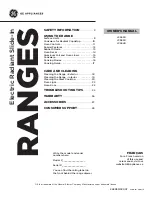
Basic operation
en
31
4.5 Residual heat indicator
The hob has a two-stage residual heat indicator for
each hotplate. Do not touch the hotplate while the re-
sidual heat indicator is lit up.
Display
Meaning
The hotplate is so hot that you can
keep small dishes warm or melt cook-
ing chocolate.
The hotplate is hot.
5 Basic operation
5.1 Switching the hob on or off
The main switch is used to switch the hob on and off.
If you switch the appliance back on again within
4 seconds after switching off, the hob will start up with
the previously stored settings.
5.2 Switching on the hob
▶
Touch .
a
The indicator lamp above lights up.
a
The displays light up.
a
The hob is ready for use.
5.3 Switching off the hob
The hob will switch off automatically when all hotplates
have been switched off for a while (10-60 seconds).
▶
Touch .
a
The indicator lamp above goes out.
a
The displays go out.
a
All hotplates are switched off.
a
The residual heat indicator remains on until the hot-
plates have cooled down sufficiently.
5.4 Setting the hotplates
To set a hotplate, it has to be selected.
Select the required heat setting on the control panel.
Heat setting
1
Lowest setting
9
Highest setting
.
Every heat setting has an intermediate
setting, e.g. 4. .
5.5 Changing heat settings
1.
Select the hotplate with .
2.
Touch or until the required heat setting ap-
pears.
5.6 Switching off the hotplate
There are 2 ways to switch off the hotplate
1.
Touch twice.
a
appears on the heat setting display.
a
After approx. 10 seconds the residual heat indicator
appears.
2.
Select the hotplate and touch or until ap-
pears on the heat setting display.
a
After approx. 10 seconds the residual heat indicator
appears.
Note:
The hotplate last selected remains activated. You
can adjust the hotplate without selecting it again.
5.7 Recommended cooking settings
You can find an overview of different foods with appro-
priate power levels here.
The cooking time varies depending on the type, weight,
thickness and quality of the food. The ongoing power
level depends on the cookware used.
Cooking tips
¡
To bring food to the boil, use heat setting 9.
¡
Stir thick liquids occasionally.
¡
Food that needs to be seared quickly or that initially
loses a lot of liquid during frying should be fried in
small portions.
¡
Tips for saving energy when cooking.
Melting
Food
Ongoing
cooking
setting
Ongoing
cooking
time in
minutes
Chocolate, cooking chocolate
1-1.
-
Butter, honey, gelatine
1–2
-
Heating or keeping warm
Stew, e.g. lentil stew
1–2
-
Milk
1
1.-2.
-
Sausages in water
1
3–4
-
1
Prepare the dish without the lid.
Defrosting and heating
Spinach, frozen
2.-3.
10–20
Goulash, frozen
2.-3.
20–30
Poaching or simmering
Dumplings
1, 2
4.-5.
20–30
Fish
1, 2
4–5
10–15
White sauce, e.g. béchamel
1–2
3–6
Whisked sauces, e.g. sauce
béarnaise or hollandaise
3–4
8–12
1
Bring the water to the boil with the lid on.
2
Continue to cook the dish without a lid.
Boiling, steaming or stewing
Rice with double the volume of
water
2–3
15–30
Rice pudding
1.-2.
35–45
1
Bring the water to the boil with the lid on.
2
Continue to cook the dish without a lid.
















































